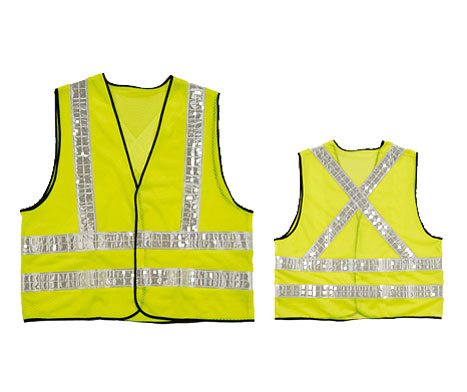In the United States, all safety vests are rated and approved by the American National Standards Institute (ANSI). Safety vest class depends on the amount of reflective material or high-contrast (orange or lime) fabric and are classified as Class 1, Class 2 or Class 3.
The ANSI standard specifies the degree of reflectivity of the tape and the intensity of the background fabric color. One of the important roles of safety undershirts is to keep workers visible, especially at night. The more dangerous your workplace, the more visibility your team will need.
In this article, let's talk about the differences between reflective safety vest class and application. We hope it will be helpful to you.

-Class 1 Safety Vests
The Class 1 safety vest is for those who work in low traffic areas. According to OSHA, this includes areas where traffic volumes do not exceed 25 mph. Class 1 safety vests are typically used by parking lot attendants, delivery drivers and roadside assistance workers in low-traffic areas. Workers should also stay out of traffic to prevent injuries.
All Class I safety vests should have a minimum of 155 square inches of reflective tape. The reflective tape should form a 360º stripe down the center and above each shoulder. These vests should also have a bright yellow or orange color.
-Class 2 Safety Vests
Class 2 safety vests are required for those working in high traffic and low visibility areas. Weather may reduce visibility in these areas and traffic volumes may exceed 25 mph. Workers should still stay out of traffic. Class 2 vests are typically worn by airport workers, heavy traffic parking lot or toll booth operators and forest workers.
Level 2 safety vests must have a minimum of 201 square inches of reflective tape. The reflective tape should be above the shoulders and around the center, forming one or two 360º horizontal stripes.
-Class 3 Safety Vests
Class 3 safety vests are for people in close proximity to high traffic areas, such as field inspectors, emergency personnel, railroad workers and utility workers. In these areas, traffic speeds may approach or exceed 50 mph. Workers often work in hazardous areas, such as right next to roads, so they need to maintain maximum high visibility to avoid injury.
A minimum of 310 square inches of reflective tape is required on a Class 3 safety vest. On top of that, workers typically wear a full set of reflective safety clothing to give themselves a full contour line. This means that the reflective material on the arms and legs has to far exceed the standards of Class 1 and Class 2 safety vests.
After understanding the difference between safety vest class and application, you can better choose the right class according to your working environment and actual needs.
Are you a safety manager who is in the process of purchasing new safety undershirts for your employees? If so, T-Safety can be your most trusted choice. We offer a wide range of high quality safety undershirts and other PPE equipment designed to keep workers safe on the job. Feel free to contact us to learn more.
Copyright © Hebei Sinotools Industrial Co.,Ltd. All Rights Reserved | Powered by  Sitemap
Sitemap